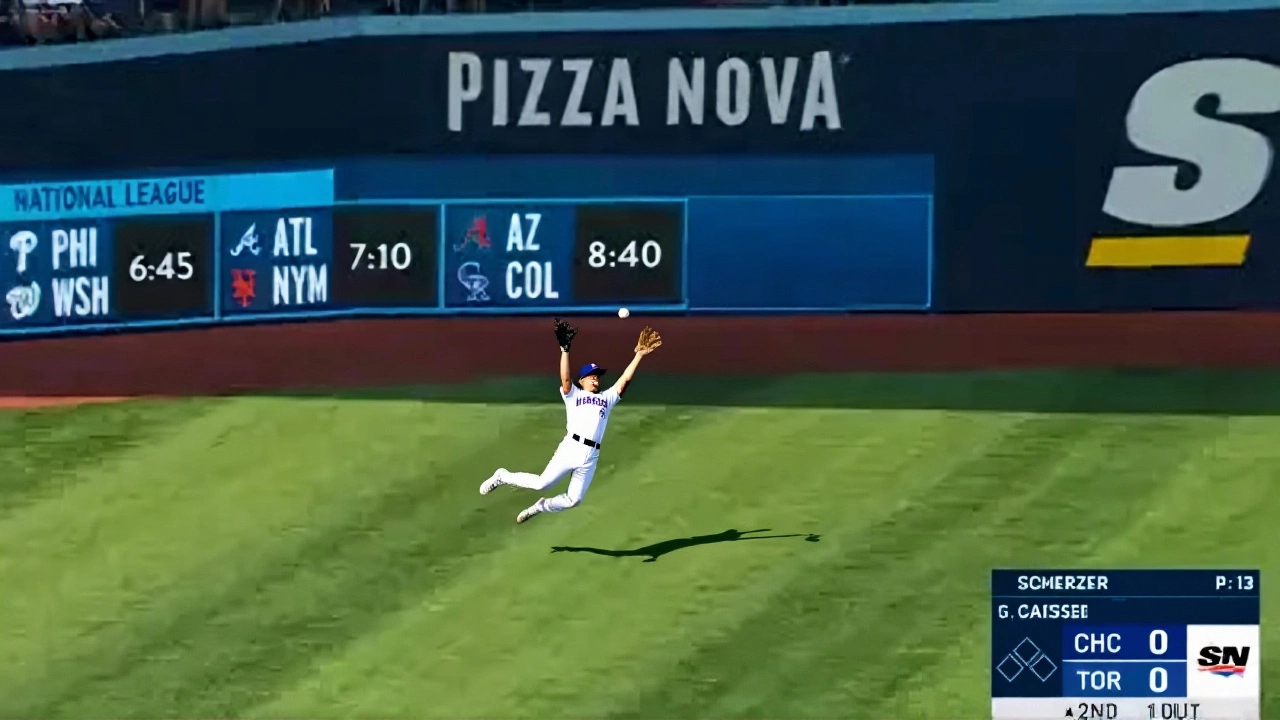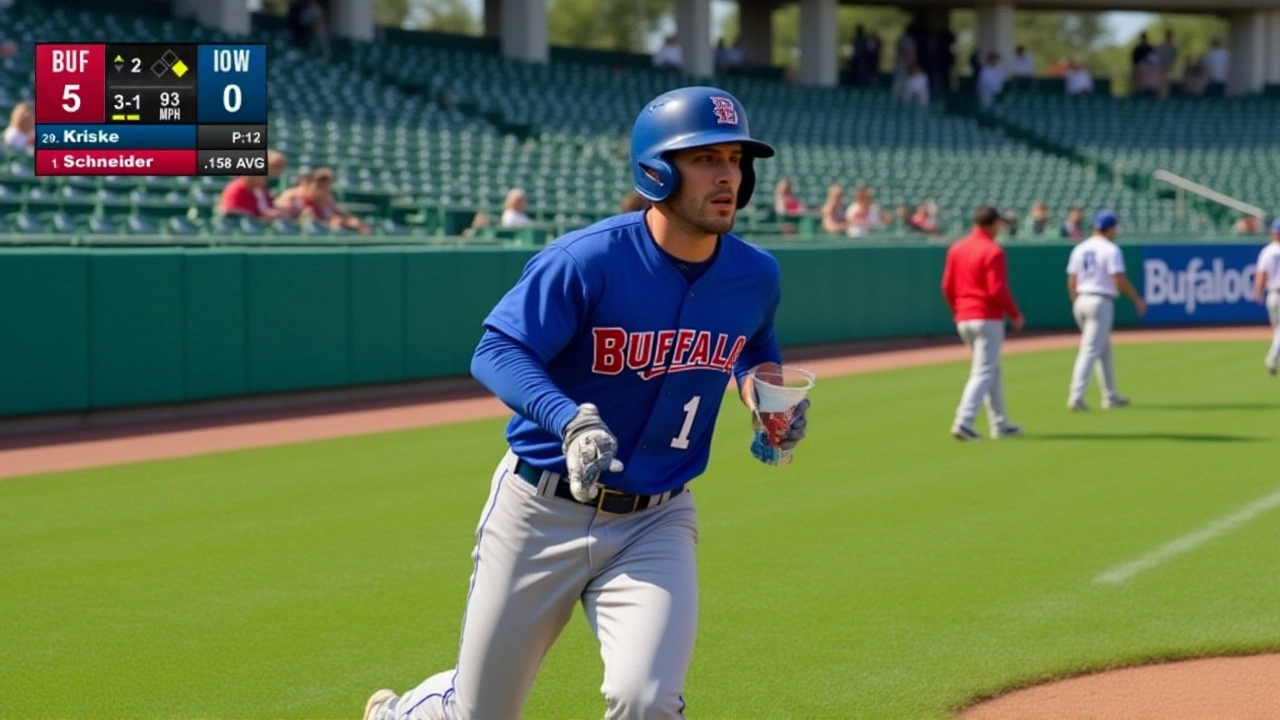
When Davis Schneider stepped into left field at Oriole Park at Camden Yards on September 14, 2025, he wasn’t just filling a spot—he was forcing the Toronto Blue Jays to rethink their entire outfield strategy. Batting second against right-hander Albert Suarez of the Baltimore Orioles, Schneider wasn’t a platoon player anymore. He was a regular. And the numbers? They’re hard to ignore.
From Bench to Benchwarmer to Breakout
Just two months earlier, Schneider was bouncing between Buffalo and Toronto like a ping-pong ball. On April 16, 2025, the Toronto Blue Jays optioned him to the Buffalo Bisons, their Triple-A affiliate. He was back in the majors the very next day. That back-and-forth wasn’t incompetence—it was caution. With Anthony Santander sidelined by shoulder and back injuries, and Ernie Clement battling finger and shin issues, the Blue Jays had to keep someone ready. Schneider, a left-handed hitter with power and surprising speed, was the obvious candidate.But here’s the twist: he didn’t just stay ready. He got hot. Since August 1, 2025, Schneider has racked up 16 hits in 47 at-bats—a .340 average—with five home runs and 16 RBI. His OPS? A blistering .928 over that stretch. That’s not a hot streak. That’s a statement.
The Postseason Push
By October 13, 2025, Schneider was starting in left field for ALCS Game 2 against the Seattle Mariners, batting eighth. Santander, still hampered by lower-back tightness, was scratched. This wasn’t a random choice. Schneider had already started two games in the ALDS against the New York Yankees—both against left-handed pitchers. Now, he was facing a right-hander in the postseason. And he didn’t flinch.In a late September game against the Milwaukee Brewers, Schneider delivered a two-run single in the seventh inning to break a shutout. He drove in Bo Bichette and Myles Straw. Toronto still lost 7-2, but Schneider’s hit was the only spark the offense could muster. That’s the kind of moment that sticks with managers.
Numbers Don’t Lie—But They’re Not the Whole Story
The stats tell part of the story. In 188 at-bats during the 2025 regular season, Schneider posted a .234 batting average, .361 on-base percentage, and .436 slugging percentage. His .797 OPS isn’t elite, but it’s above league average for a corner outfielder who doesn’t play every day. What’s more telling? His OPS against right-handed pitching jumped to .841—nearly 100 points higher than against lefties. That’s why the Blue Jays started him three straight times against right-handers in September.Manager John Schneider (no relation) and the team’s analytics department noticed something: Davis performs better when he’s not treated as a situational hitter. His swing is quicker. His pitch recognition improves. His confidence grows. “He’s not just a platoon guy anymore,” one insider told Sportsnet. “He’s becoming a guy you can trust in the middle of the order.”

The Santander Shadow
Here’s the looming question: what happens when Anthony Santander returns? The Blue Jays’ medical staff projected his return for the weekend following September 14. Santander, a 2024 All-Star and 30-homer threat, is a proven run producer. He’s also a right-handed batter who plays elite defense. His return would naturally push Schneider back to a bench role—perhaps 2-3 games per week, mostly against lefties.But what if Schneider keeps hitting? What if he hits .320 with three homers in his first 10 at-bats after Santander’s return? The Blue Jays won’t have a choice. They’re in the thick of the AL playoff race. They need offense. And if Schneider is producing more than Santander—especially against right-handers—they’ll have to adjust.
General Manager Ross Atkins isn’t saying anything publicly, but internally, the message is clear: we’re watching. If Schneider keeps this up, Santander might not be the everyday left fielder come October. He could be the DH. Or the fourth outfielder. Or even a trade chip.
Who’s Left in the Mix?
Schneider isn’t the only one fighting for time. Nathan Lukes and Joey Loperfido are both on the roster, both left-handed hitters with decent speed and solid glove work. But neither has shown the power Schneider has. Lukes has one home run since July. Loperfido? He’s more of a pinch-runner. Schneider’s five home runs in September alone dwarf their season totals.The Blue Jays’ outfield is no longer a question of depth—it’s a question of identity. Are they building around Santander’s return? Or are they discovering that Davis Schneider might be the guy they didn’t know they needed?
Frequently Asked Questions
Why is Davis Schneider getting more playing time now?
Schneider’s increased playing time stems from his hot streak since August 1, 2025, where he hit .340 with five home runs and 16 RBI in 47 at-bats. His improved performance against right-handed pitchers—raising his OPS to .841—has forced the Blue Jays to move beyond their traditional platoon system. Injuries to Santander and Clement created the opening, but Schneider seized it with consistent offense.
How does Schneider compare to Anthony Santander statistically?
As of late September 2025, Santander is on the 60-day IL with shoulder and back injuries, so direct comparison isn’t possible. But in 2024, Santander hit .257 with 30 HR and 86 RBI. Schneider’s 2025 season shows 11 HR and 31 RBI in 188 at-bats. While Santander is the more complete player, Schneider’s recent surge (.340 avg since August) and higher OPS against right-handers make him a viable alternative if Santander’s return is delayed or if his defense declines.
What role could Schneider play if Santander returns?
If Santander returns healthy, Schneider’s role would likely shrink to 2-3 games per week, mostly against left-handed pitchers. But if he continues hitting like he has since August, the Blue Jays may shift Santander to DH, use Schneider as a platoon starter, or even explore trade options for Santander to lock in Schneider’s bat. The team’s playoff push makes flexibility more valuable than positional loyalty.
Is Davis Schneider a long-term solution for the Blue Jays?
He’s not yet a lock, but his recent performance suggests he’s more than a bench option. At 25, Schneider has shown power, plate discipline (36 walks in 2025), and adaptability. If he maintains his .340+ average and continues hitting right-handed pitching effectively, he could become a core part of Toronto’s outfield for the next three to five years—especially if Santander’s injury history raises durability concerns.
How has the Blue Jays’ coaching staff changed their approach to Schneider?
Manager John Schneider and the analytics team have shifted from treating Schneider as a situational hitter to a lineup regular. They’ve stopped limiting him to lefty matchups and are now using him against right-handers in high-leverage spots. His increased at-bats in September reflect a strategic pivot: they’re trusting his bat over traditional platoon logic, a sign they believe he’s ready for a bigger role.
Could Schneider be traded if Santander returns?
It’s possible, but unlikely in 2025. The Blue Jays are in playoff contention, and Schneider’s bat is too valuable to move mid-season. However, if he continues performing and Santander returns healthy, the front office might consider a trade in the offseason—potentially for pitching depth or a defensive upgrade. His value is higher now than it was six months ago.